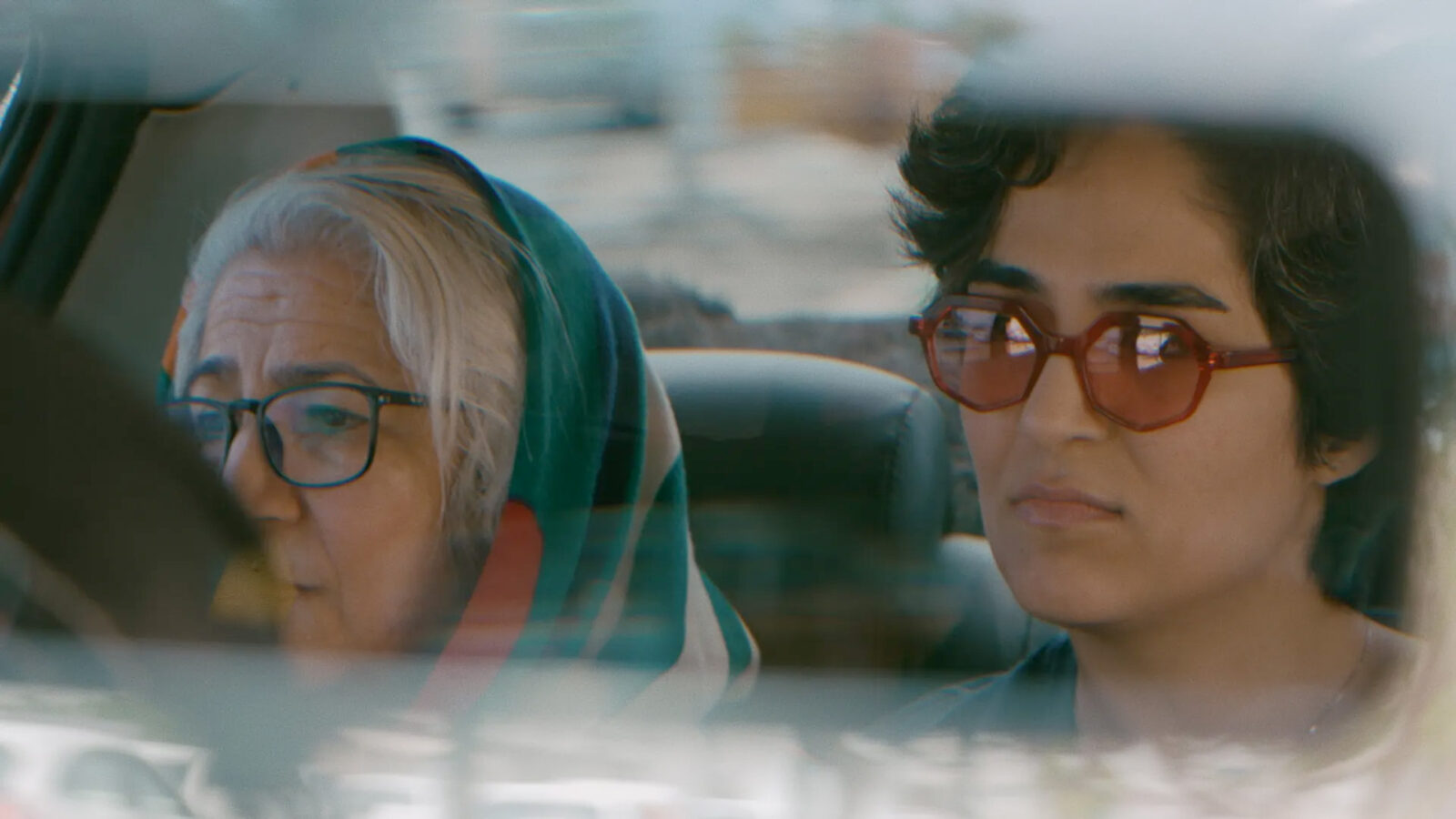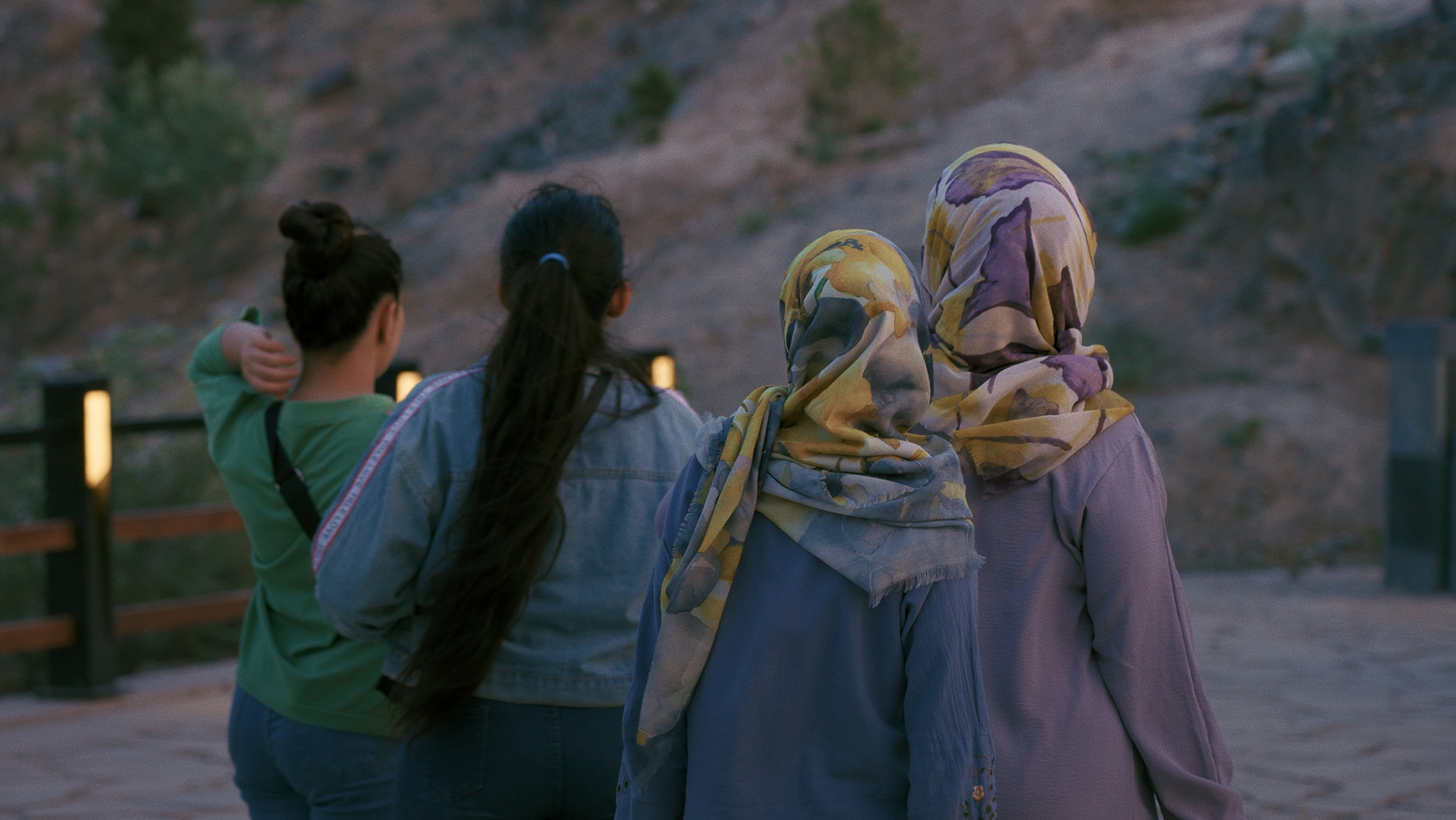Affectionate Counter-Narratives
Elahe Esmaili on A Move
Just a couple of days after images of Iranian doctoral student Ahou Daryaei became a viral symbol of resistance against Iran’s strict hijab laws, we talked to Elahe Esmaili about her short documentary A Move, in which she refuses to wear a hijab.

In her short film A Move, London-based Iranian director Elahe Esmaili refuses to wear a hijab during her family’s annual celebration of Ramadan. But her refusal is not of the belligerent kind: her voice soft and firm as she insists on the right to be herself, when everyone is forcing her to adjust herself. She talks to her mother, father, cousins, uncle, and extended family during a move from the house she grew up in to a new place her relatives will now start calling home. Yet, the film is not about talking. Esmaili’s perceptive approach to documenting intimate spaces—be it the house and its corners, or the spacious garden hosting all of her family every year—leaves an impression of unconditional tenderness. As a result, the short illuminates these spaces with the same affection that also rings in her words of resistance against unreflected religious dogma.
A Move provides the backdrop of necessary change (a family’s relocation) in order to probe the severely upheld hijab laws in Iran, thanks to the government, morality police, and people’s paralysing fear. In it, Esmaili exemplifies freedom and self-expression, both as a director and a subject of the film. Moreso, she puts forward a call for acceptance and reasons with her mother on multiple occasions, with the hope that a dialogue between generations is indeed possible.
I talked to Elahe Esmaili just a couple of days after images of Ahou Daryaei, the Iranian doctoral student at Tehran’s Islamic Azad University became a viral symbol of resistance against Iran’s strict hijab laws. When discussing A Move—a film which is also dedicated to Mahsa Amini’s memory—we would inevitably be talking about ways of resistance, as well as the challenges and determination involved in the making of a documentary amidst and with your own family.
I kept thinking about the idea of “the move” as a narrative framework—packing at the beginning, and unpacking at the new home in the end—and I was making a connection, I guess, between concealing and revealing, packing and unpacking. There’s the timeline of the move, the timeline of the shooting, and the political timeline of the Woman-Life-Freedom movement. How do those three timelines relate to one another?
We shot A Move over a week, exactly six months after Mahsa Amini’s death. The street fights weren’t going on so aggressively and so actively; it felt slightly calmer, but still, the police were arresting tens of women every day who were on the streets without hijab, and the fight continued on different levels. There wasn’t a call out for an active protest on the streets then, and that was my first time returning to my family after the movement started.
Before we talk about what’s in the film, I want to ask you about something that is not, namely the triangular relationship between you, your family, and the camera. A Move welcomes the viewer into the family’s inner circle, but can you tell me more about how you figure as a filmmaker within your family, and what role the camera plays in that?
I had already filmed my husband’s family [in Can I Hug You? (2023)], so my family knew their turn might come too. [laughs] A Move was the first time I brought the camera into my own family; I went in with the intention of making a film amongst them, and they were fine with it, but it was a tough time because of the move. It can be stressful when moving from an old house into a new one, so they were very generous to let me do that.
But also, you weren’t alone; you had a small crew with you.
Yes, aside from myself, there were two of my friends as well. In the beginning, my mom was a bit worried that it would be difficult to shoot a film during the move, let alone to have strangers around. So, I chose the crew in a way that I knew my mom would get along well with them. Fortunately, that’s what happened: in the first hour they met, they all bonded so well that my mom didn’t even care about me anymore. [laughs] She was just hanging out with my friends while we were filming; she loved them. They have become really good friends since, and they would still meet up when I’m not there.
Regarding the triangle you mentioned… Shooting A Move was the first time my mom saw me actually making a film. She kept nagging me and could see that it is a really difficult job. But they all accepted me, and that was the foundation of this film.
The intimate feeling of stepping into a familial world is equally palpable in the apartment scenes and those during the garden party. How much of the set-up did you discuss with the crew when it comes to those different sequences?
Let’s say, for 90% of the scenes, I knew exactly what we wanted to achieve beforehand, so I would communicate that with my crew in advance. Because I was in front of the camera most of the time myself, real-time and quick communication was not always possible. We had proper conversations before each scene, and they knew what I was looking for. If something new and interesting would come up, I had a radio mic wired through which I would just send them voice notes with instructions. But that was a minor thing. The major set-up would happen before we even start filming the scene.

Did you have any particular negotiations in advance with your family, in order to make the film the way it is?
The only thing that I had to pre-plan was the garden party. Our family organises it every year at the end of Ramadan, but since it fell during the move this time, my mom was not sure if we should do it and considered skipping it this year. She was a bit hesitant, but I sensed that we should go and that I was going to film that day. She didn’t know how crucial this scene would be for me [and the film], but after I reassured her it would be fine, she went ahead with it.
When you say you knew what you wanted from the scenes, does that stretch to the visual side of it all? I noticed the consistent and telling use of windows and mirrors as frames within the frame, for example…
Yes, that was the aesthetic I was hoping to achieve! I was raised in that house, so I knew the architecture well, all the corners and the space. I had taken reference shots to share with my cinematographer to capture the symmetry from the inside and the outside [of any room]. I was hoping to translate that idea of division and reflection into visuals, so yes, we talked about them, and I was specific about some of the shots.
Can you give me an example?
Like that first shot where my mom and my dad are in their own spaces and they seem to sit together within the frame; that division is there, visually! Also, in the garden party scene, you see people praying, and [the camera pans to] others who aren’t. That is the shot I made the film for! I knew there would be people praying when the call to pray goes on, and I knew that some wouldn’t take part, so I made sure people were grouped together. There were also some cute moments that we didn’t expect, but we were lucky to have them, like when my mom and my dad sat down at exactly the same time; that just so happened! Those were the lucky, fortunate bits.
Making a documentary film today, the way I see it, involves a fuller, more saturated way of living in the world. Especially talking about your film two days after the photos of the protest of Ahou Daryaei went viral online makes me want to ask you about the relationship between politics today and documentary filmmaking for you.
Don’t trust how I look in this film: so peaceful, trying to keep it calm, cool, and collected. I was trying to rehearse something with my family about acceptance and coexistence, so it had to be peaceful. But I was feeling extreme rage as a filmmaker at that time, the urgency that we needed to do something. That was the common feeling of everyone who wanted to and could do something at that point [of the movement]. Like Ayou in the photo: she is full of rage and just cannot stand that harassment anymore. At the entrance of the university, she was told to put on her scarf, but she didn’t, got harassed because of that. She got told off multiple times, and each time, she resisted. Then it got physical, the officer grabbed her clothes and ripped them off, and that’s when she was like: no more.
It builds up until we all get to a point of full-on rage. Everyone is doing whatever they can for the cause, and for me, that was making a film and showing an alternative. A Move provides a counter-narrative to what the Islamic Republic propaganda is saying, namely that the religious families will not accept women who are not wearing hijab. This is what I thought I could do that would be most effective on my end, with my skills, with what I do.
We’re all finding our specific ways to fight for freedom and to make a change. It’s an ongoing struggle and resistance happens on a daily basis in the country; some [acts] go viral, like Ayou’s, and some exist more silently and stay on a national level or even regional level—but they all have impacts.
